
Glastonbury, or the Glastonbury Festival of Contemporary Performing Arts to give it its full title, is The Big One. Every year a 1,000 acre area of Somerset farmland becomes the most densely populated place on earth as over 200,000 people descend for a week-long party. It very much feels like its own city, and when it is on, it becomes the fourth largest city in the southwest of England, double the size of nearby Bath. Most of the revellers get to the festival by car, coach, or train, meaning the festival is, for many people, bookended by hours of sitting in traffic as tiny rural roads become clogged.
To avoid this, my friends and I decided to cycle to Glastonbury this year, and I think it was the best decision I’ve made in a long time. Given we range in ability from ‘very keen cyclist who works in the bike industry’ to ‘does not cycle except to get to basketball practice’ I reached out to Bosch and borrowed some electric bikes for the journey to level the playing field, and to be honest, make the homeward journey a little more painless.
A relatively new player to the ebike space, Advanced Bikes provided the range of steeds, from a full suspension off-road touring model to a Dutch-style town bike. Only once did I get accused of ‘cheating’ by a volunteer because our bikes had motors - this is a real pet peeve of mine, as ebikes are an incredible tool for getting people out and riding who otherwise might not, and reduce car usage, but people still have their prejudices.
While it’s still fresh in my mind, and yours too if you are still lamenting the enormous queues, these are my take-home lessons that you can have free of charge if you consider riding to Glasto next year.
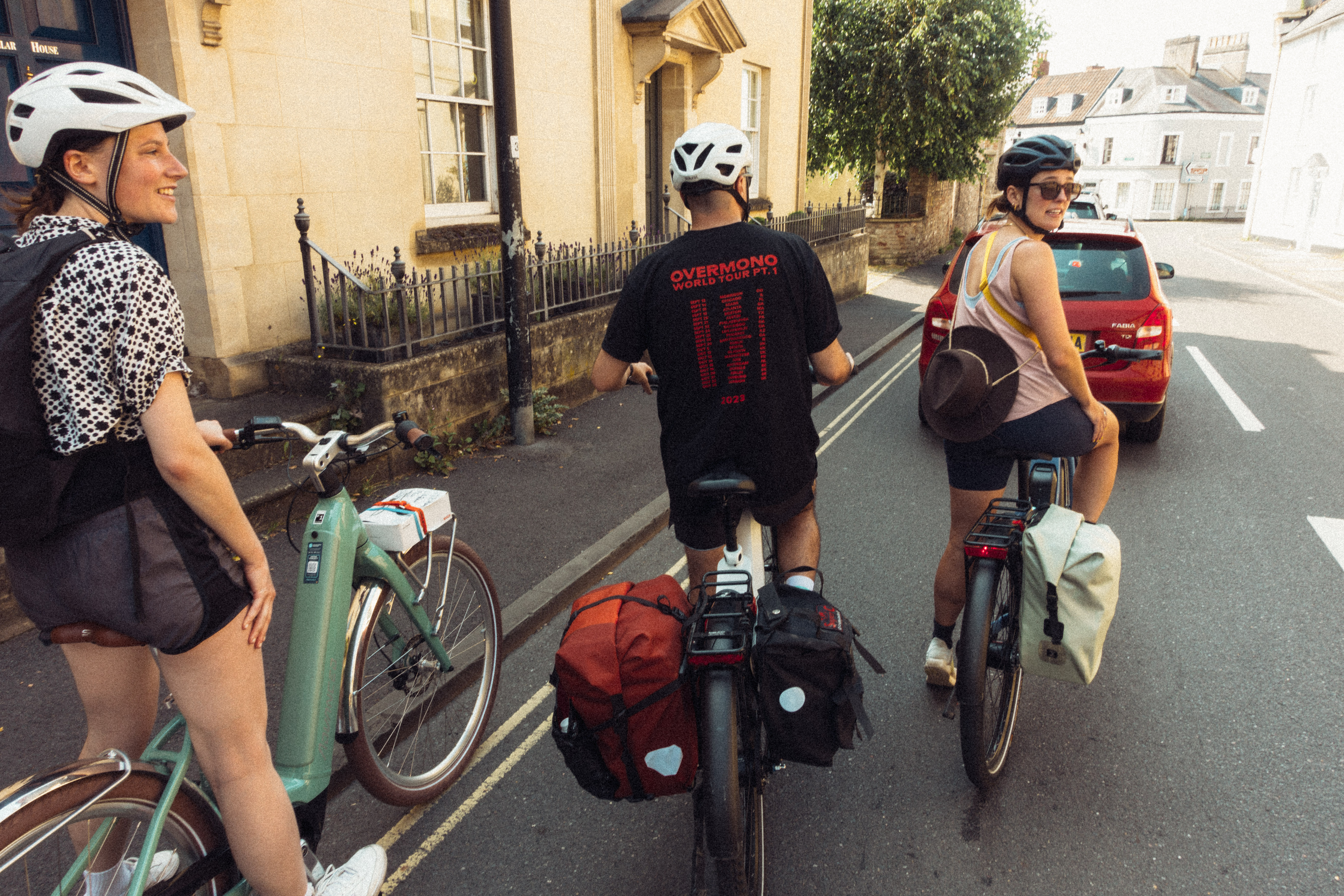
1 - It’s the easiest way to get there and get out again
If you’re not a cyclist, and especially if you’re nursing a sore head too, this may not be easy to believe, but getting to and from the festival by bike is a breeze. Having ebikes helped a great deal, and I’ll go into that later, but in terms of just getting in and out of Worthy Farm, a bike ticket is probably second only to a VIP ticket. We set off from Bristol at 8:30 AM on the Wednesday morning and were in and set up at camp by midday. Our friends who drove set off at 5:30 AM and arrived after us.
Because the festival wants to promote green activities, cyclists get to come in through the hospitality entrance. The ride from Bristol isn’t huge, and certainly achievable for most people with a moderate level of fitness, and worth it for never being in a queue.
Likewise, when leaving, all we had to do was walk to our bikes, stored in a secure park always staffed by a volunteer (so you can leave the locks at home), saddle up and ride off in the morning; home by lunchtime to start the mountain of washing.
2 - Make use of the bag drop
But how on earth do you get all your stuff there?! Sure, some riders do take everything with them, and I saw a few bike trailers being put to good use, but the easiest thing to do is make use of a bag drop service. Bike to Glasto runs bag drops from Bristol, London, and a load of other locations around the southwest, and all you have to do is drop your luggage off a few days before the festival and it’ll be there when you arrive. It’s cheap (£15 or so from Bristol), and then the process is reversed for the homeward leg.
There are weight limits so you can’t ask them to bring 15 crates of cider, but we all managed to easily fit all we needed for the week within the limits.
3 - Take advantage of friends and family who are driving
Given the size of the festival there’s every chance that even if you cycle in there are people you know who will be driving, so if you can’t fit everything within the weight limit for the bag drop (those 15 crates of cider for example) then you can ask very nicely for drivers to help. Our friends took our tents this year, and my partner's parents took our liquids. Sure, you have to schlep across the site to get your stuff off them, but just treat it as sightseeing and offer them a can of Bloody Mary for the morning.
4 - Ebikes are a great leveller
This one is perhaps something you’d have gleaned from the title, but if you are a cyclist and you want to ride and you have reluctant friends then consider ebikes as an option. Beg, borrow, or hire them for a bit of you don't have them. Even with someone who basically never rides we were all able to happily ride as a group over the Mendips without issue.
All of our borrowed machines from Advanced were powered by a crank-mounted Bosch motor and battery. While the motor and power packs differed between the models - the trekking models used the more powerful Bosch Performance CX motor and a larger 750Ah battery, while the urban models used the Bosch ActivePlus motor and a smaller power pack - we found the additional weight of the larger bikes offset the additional power and we all arrived within 5% of each other in terms of remaining power.


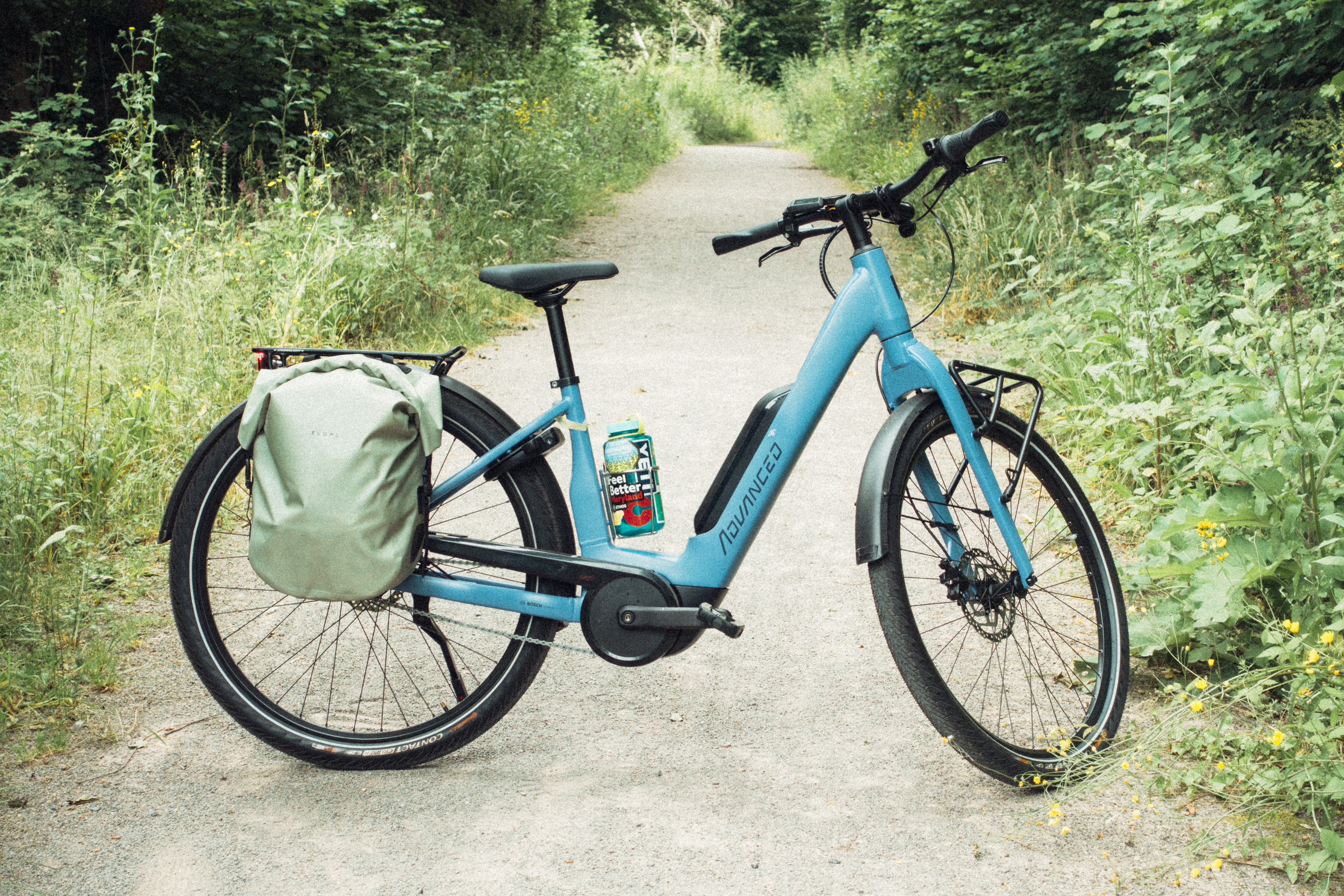

5 - Ebikes still get punctures
When using utility-oriented bikes like these ones from Advanced Bikes, it’s easy to slip into the trap of assuming they don’t puncture. I had the same issue riding a cargo bike. Ebike tyres are generally more sturdy, but the day before we left a large staple meant I had to walk home. Just like any other ride remember to take all the spares you need - in this case I had to remember a spanner for the wheel nuts in addition to the usual multi-tool.

6 - Bring a charger
On the way out we were pretty judicious with our power usage - too much so to be honest, but more on that later - but even if we had absolutely rinsed the batteries or ridden a longer route we would have been fine because we packed a charger for each bike. Power sockets were available at the bike lockup, and while I had to stay with them while they charged, there was no risk of running out of juice.
7 - Non-standard bottle cages
I find standard bike bottles tend to leak in a bag, and let’s be real, nobody wants lukewarm gin & juice leaking on their jumper halfway through Sunday afternoon. Swap out the traditional bottle cages for ones that can take something like a Nalgene. They’re harder to drink from on the fly, but far more useful in the festival itself. You will need to swap out your bottle cages though.
Velo Orange makes the Mojave cage, and Arundel has the Loony Bin, into which I stowed an insulated Yeti mug. I of course don’t condone boozing while riding, so it was a great way to keep a drink (of water) ice cold for the ride in.
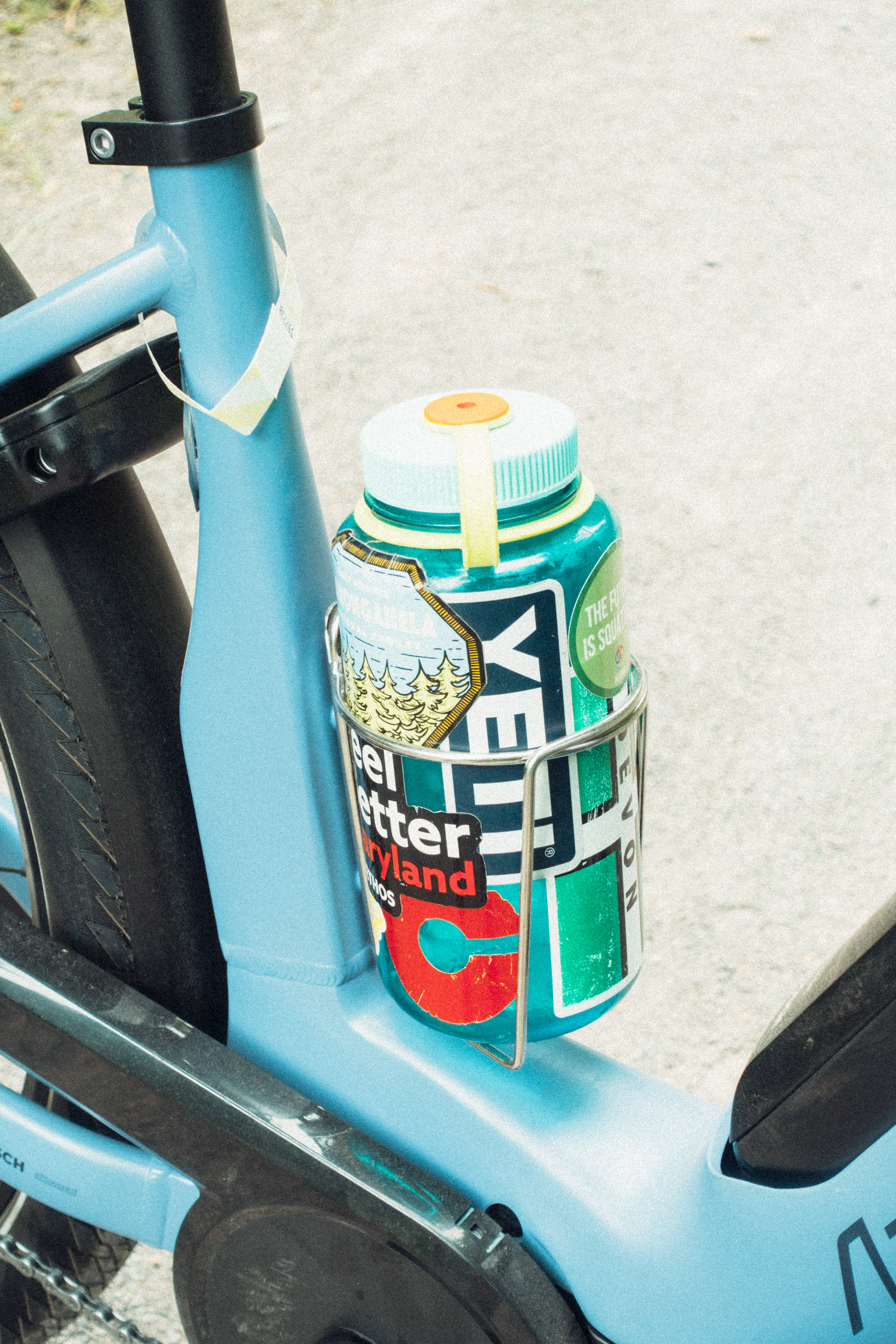
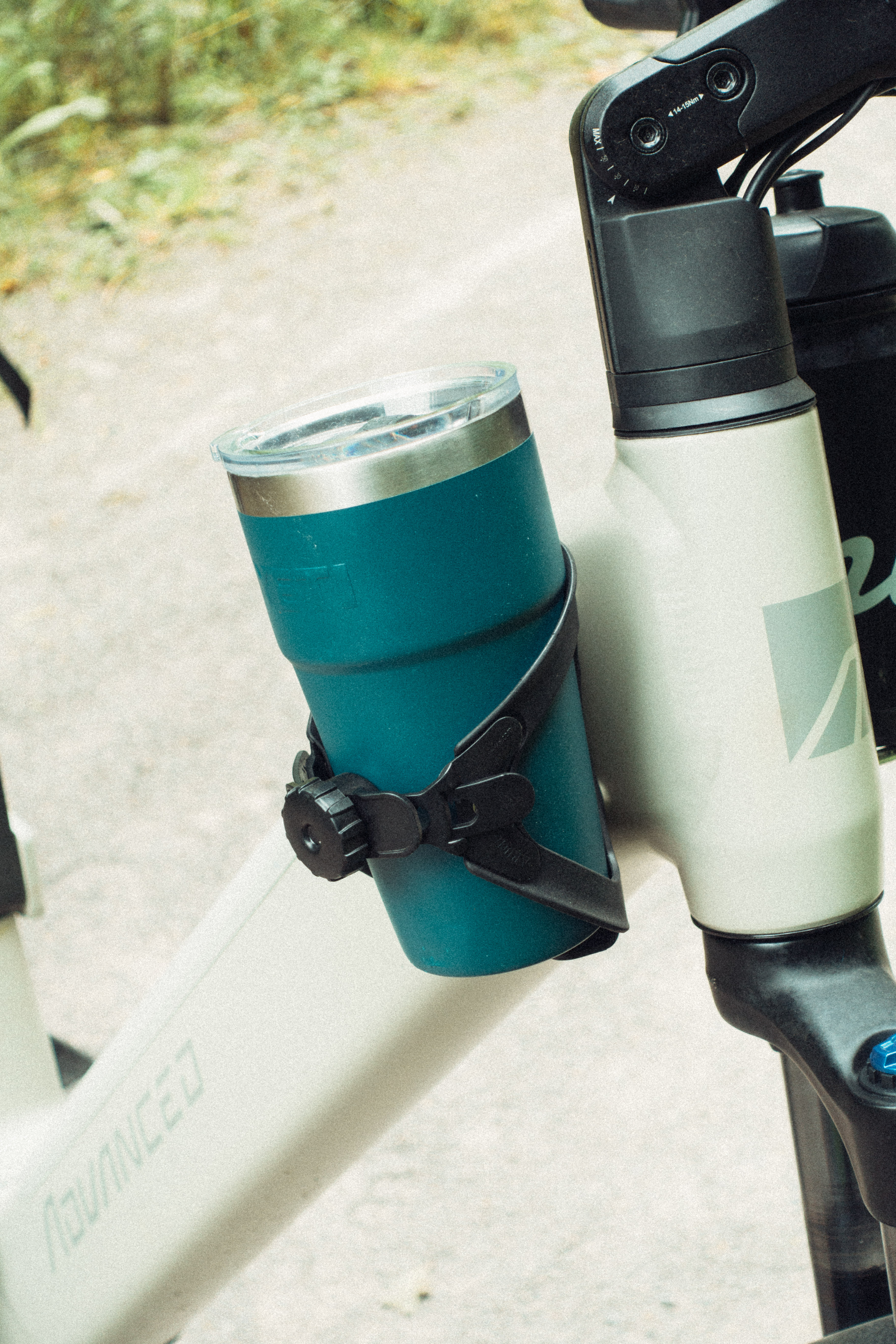
8 - Batteries last longer than expected
Range anxiety is real, but ebike batteries now are so good that it’s misplaced anxiety. In the two and a half hilly hours there, we doggedly stuck in ‘eco’ mode and only used ⅓ of a tank of electrons. We could have got there and back on one charge, but festivals are meant to be fun - Don’t be a martyr, use Turbo to get up the hills if you need, or at least ‘Tour+’.
9 - Make use of the bike showers, even if you camp elsewhere
If you ride to Glastonbury you get access to the cyclists' campsite. It is very much on the periphery, but it is quiet. Moreover, it has the best loos - compost toilets with a strict sit-down-only policy - and its own shower block for which the queue is minuscule even at peak times.
Even if you camp in the bowels of the festival you can still use the cycling campsite facilities. A morning walk, a good bracing shower, and a breakfast wrap on the way back set you up for the day very nicely indeed.
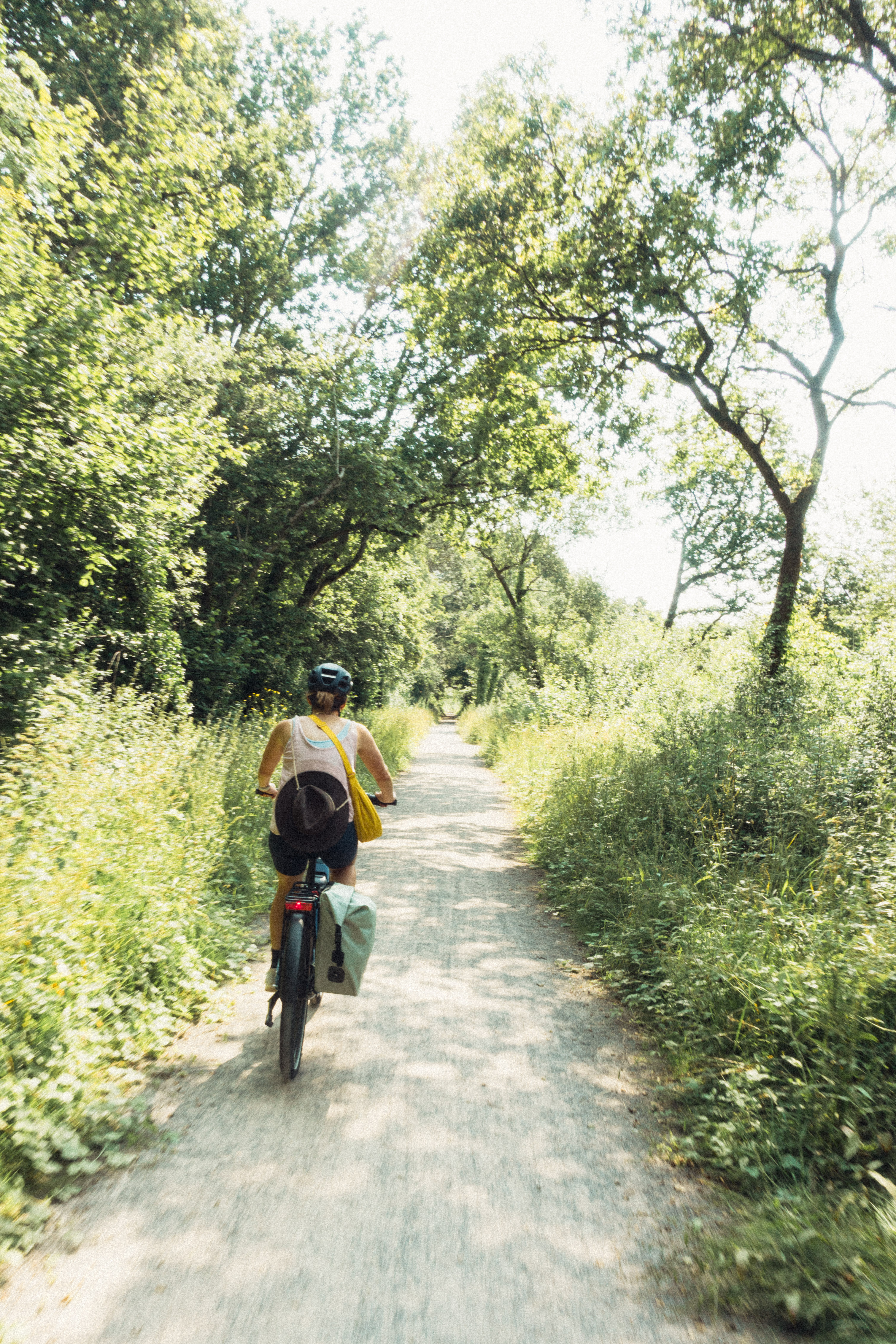
10 - Take the bike paths, even the gravelly ones
As a roadie I tend to view bike paths as an occasional annoying necessity, but for riding to a festival with your friends they were easily the nicest bits of the ride. Traffic free, occasionally gravelly if you use the nearby Strawberry Line, but never really burdensome on a loaded bike. You’ll also likely bump into other cyclists going to or from the site and can get excited together or swap stories about the toilets.
11 - Do a proper test ride
If you’re not usually a cyclist, or even just not used to riding a laden bike, then it’s worth doing a test ride before you go. The sections where there aren’t cycle paths are often comprised of quite narrow country lanes which will be more full of cars than normal - knowing how to handle your machine with stuff attached to it in advance will make these parts significantly less stressful.
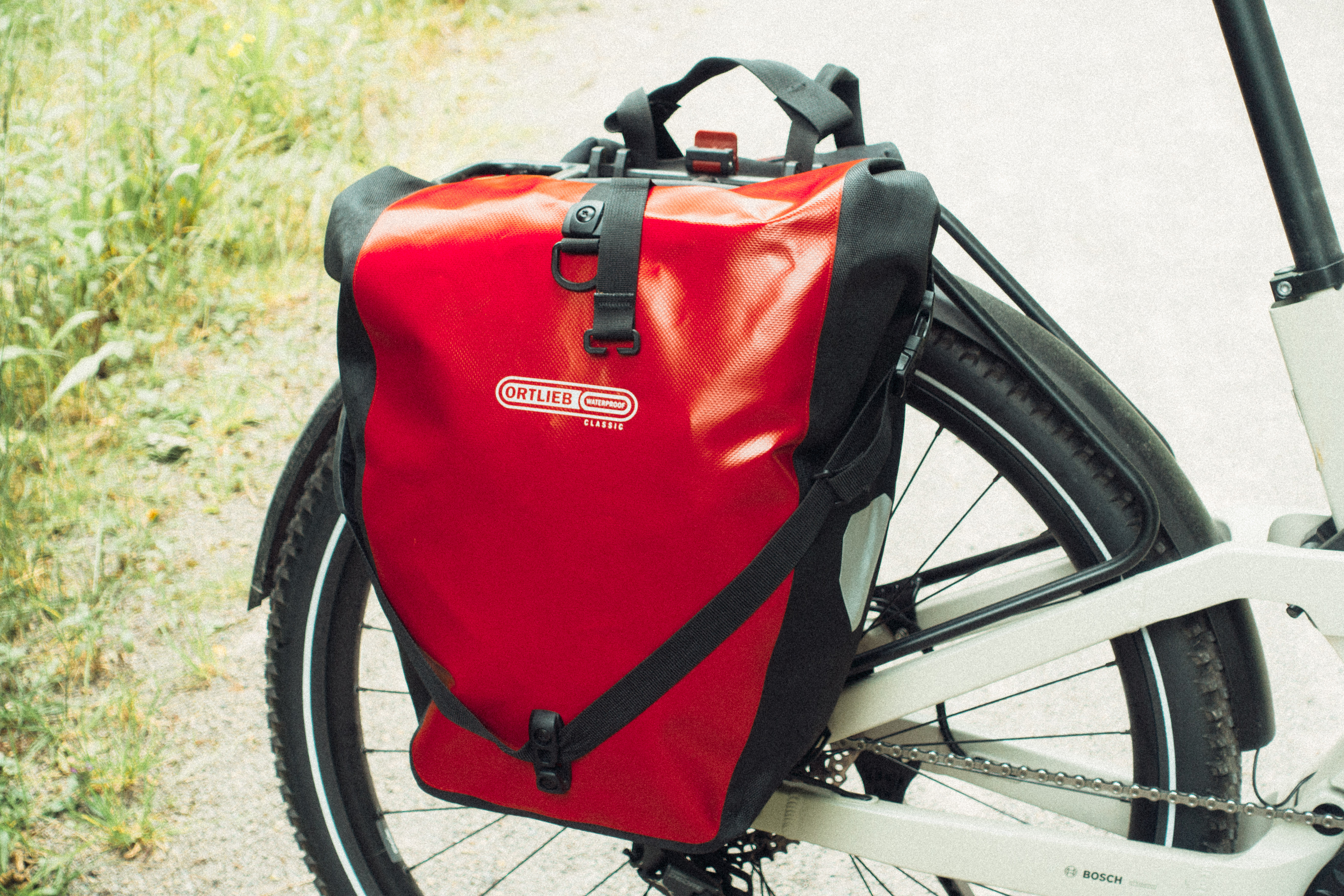
12 - Panniers beat bikepacking bags
Bikepacking bags are now a lot more common than bike panniers, but if you are going to strap things to your bike to take with you, which we did with some overspin, then bike panniers beat bikepacking bags any day. It’s not so much that they are easier to pack (though they are), but it’s more that they are easier to lug across the site. If you’re buying some, I recommend you get some with shoulder straps. It keeps your hands free to carry other luggage, or that frosty mug of iced water you haven’t finished on the way.
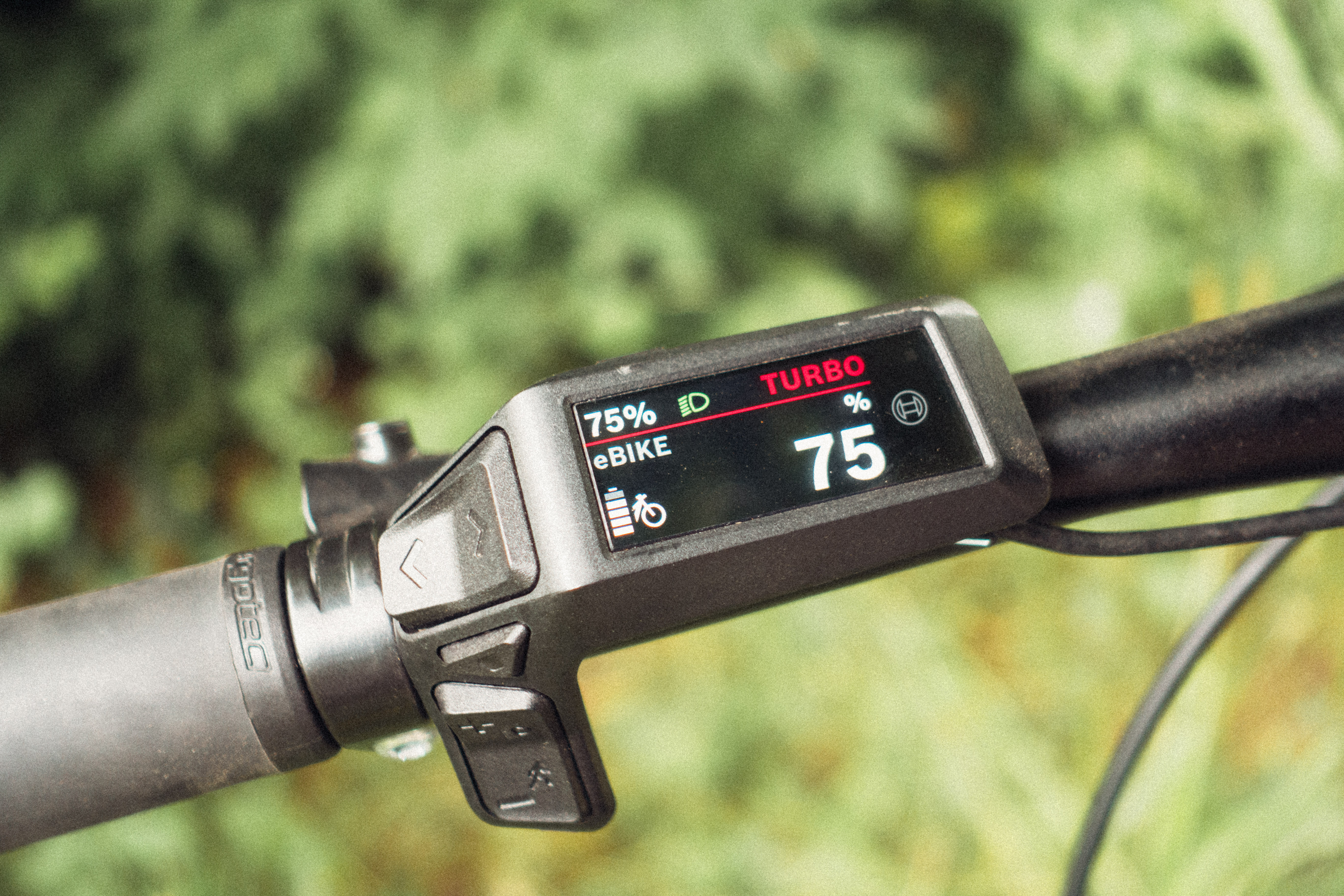
13 - Eco out, Turbo home
Another battery tip for all you ebikers is to use eco for the way out to conserve as much juice as possible. This means you’ll have to spend less time charging while the festival is going on. On the homeward journey when you may well be less than fresh, at the end of which charging is a breeze, we opted to use more power on the hills and have no regrets on that front.
14 - Charge on Thursday morning
We arrived on Wednesday, and couldn’t face charging the bikes up the same day, instead opting to explore the site. Thursday is almost universally considered to be the worst day; there’s less on, and what is on is always packed because people are itching for things to do. The best thing is to go charge your bike on Thursday, after a nice shower, meaning you can dry your towel while charging too.

15 - Wells for breakfast
Yes, leaving by bike is substantially easier than leaving by car, bus, or train, but it’s still a bit of a scramble. Bag drop for the homeward leg closes at 10am, so chances of a decent breakfast are slim, even for the most organised festival goers. My final tip is to head to Wells, the small city near to the festival, and get a decent breakfast there before heading homeward. There are plenty of cafes, and you will absolutely want another coffee and what may be your first proper meal at a table for a week.







